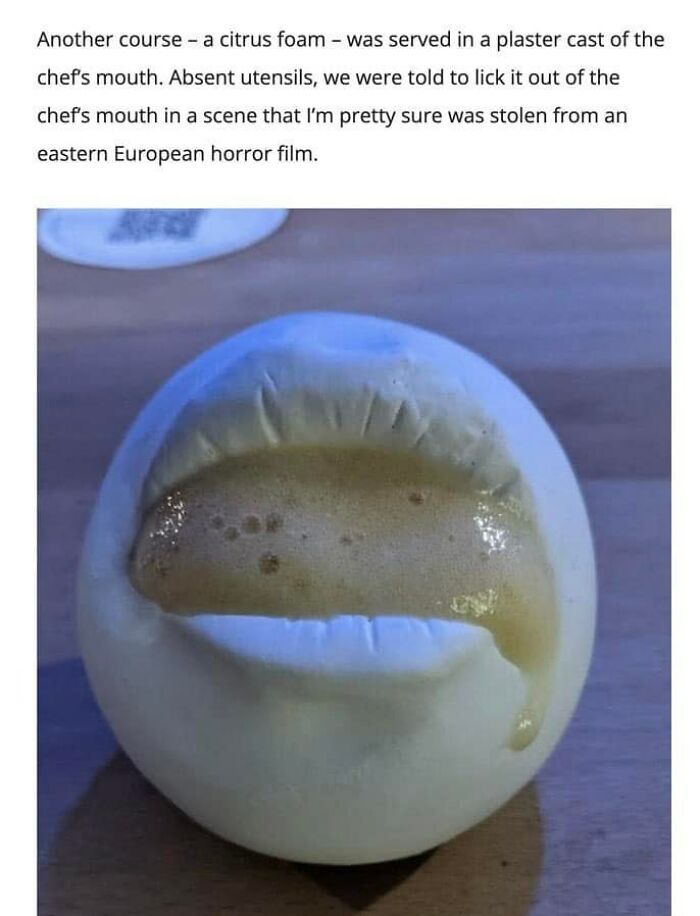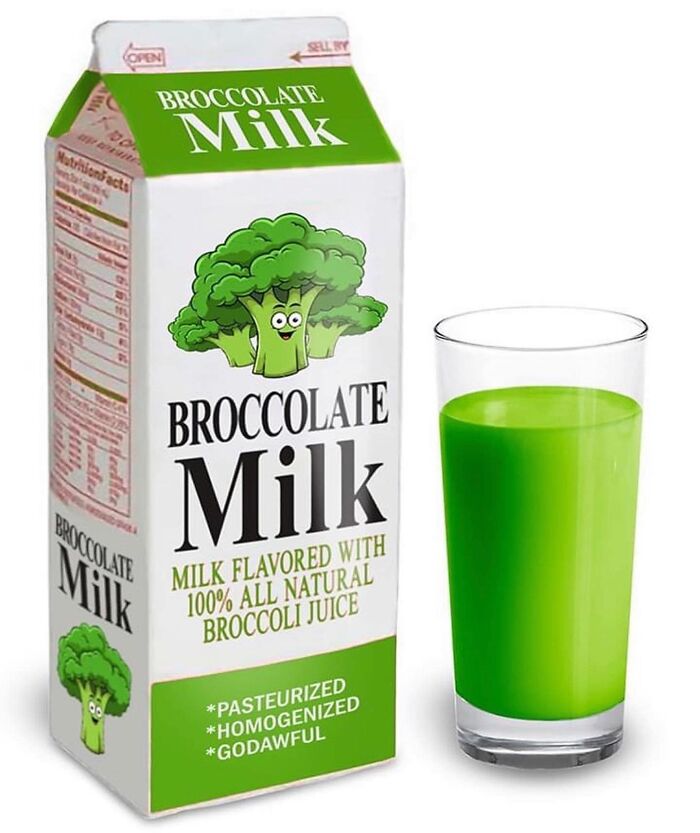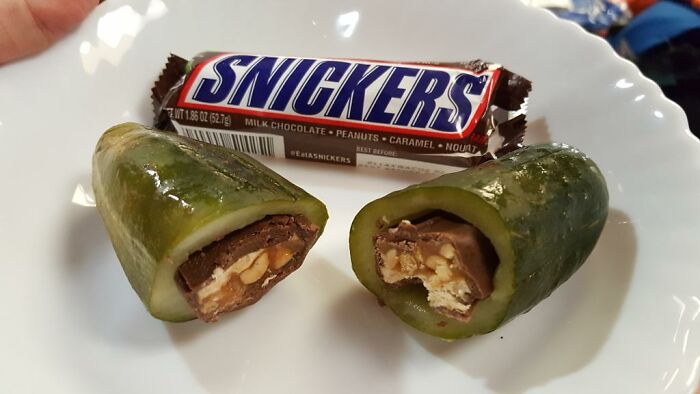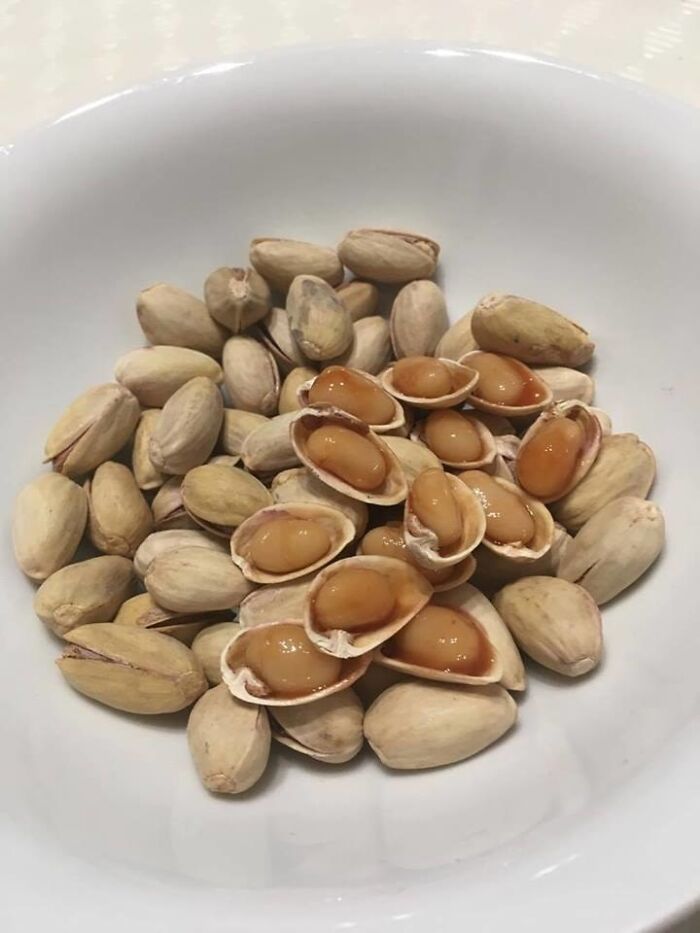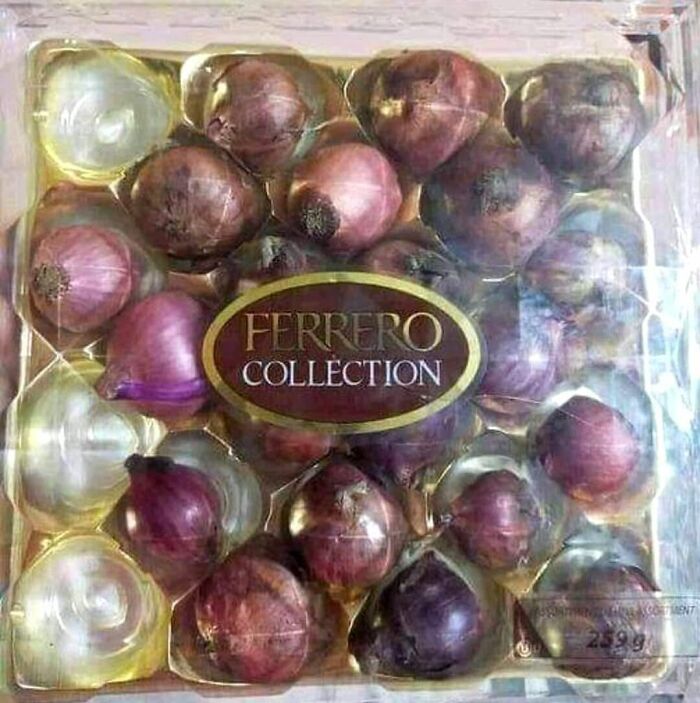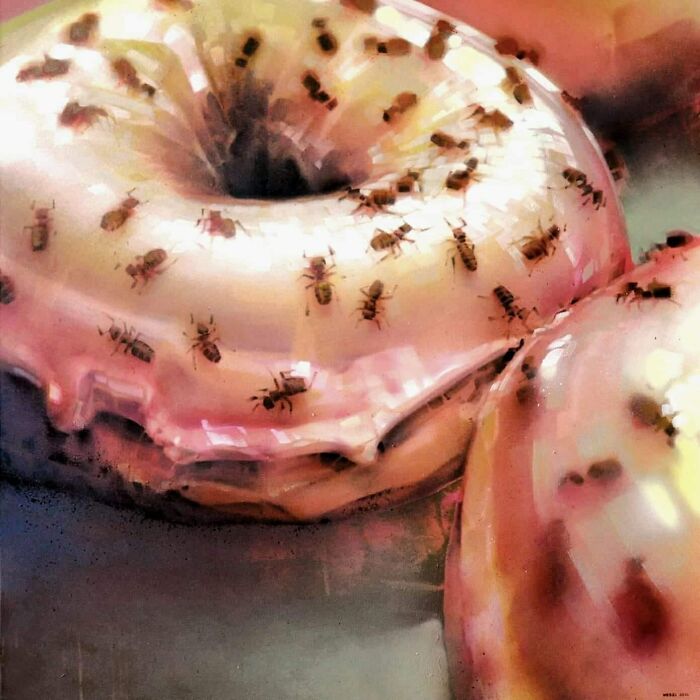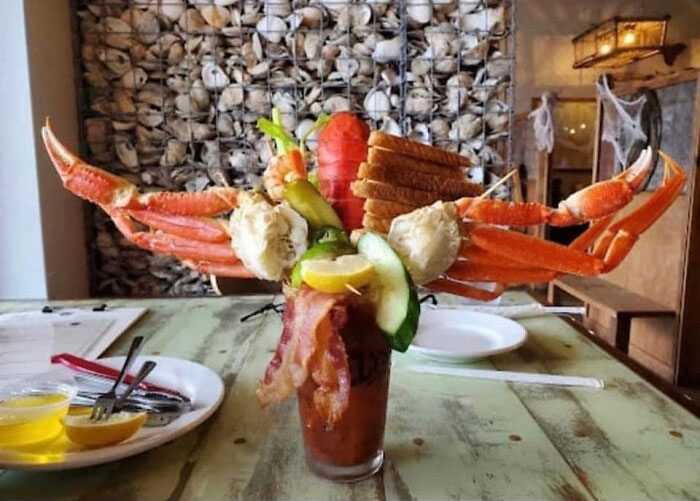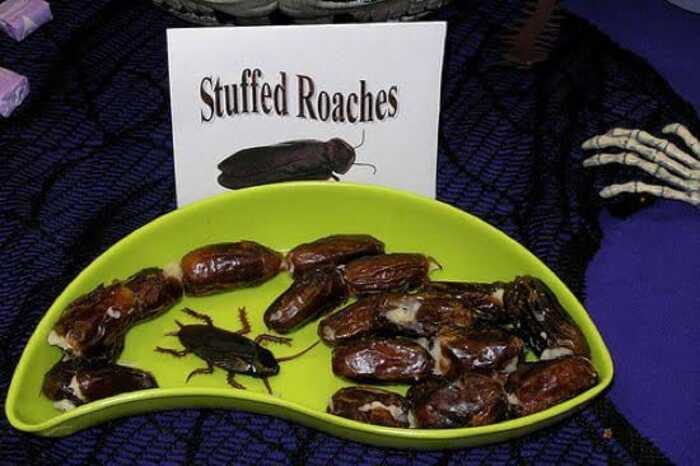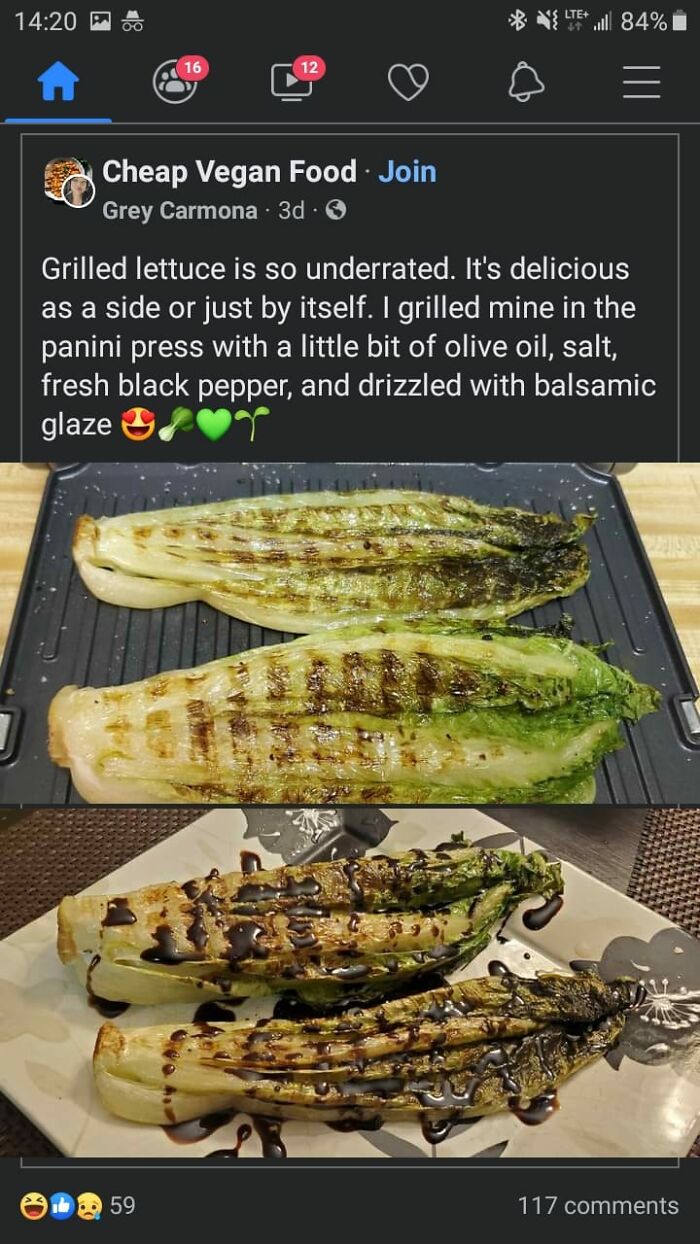
This Facebook Group Collects The Most ‘Cursed’ Foods That Might Test The Strength Of Your Stomach (30 Pics)
Coffee. Croissant. Chocolate. Orange juice. Pizza. Coffee. It's easy to make your stomach work overtime in just half a day. But nothing will test its strength as much as the Facebook group 'Cursed Foods.'
Hate and bullying aside, the community has no guidelines as to what its members can post, and they're really pushing the limits. From spaghetti car banana to a ground meat sculpture of Justin Bieber, the pictures that emerge in this little corner of the internet are a hard-to-describe mix of funny, strange, and nasty, so it's better that you just check them out yourself.
Enjoy hating them!
More info: Facebook
This post may include affiliate links.
It's pretty hard to imagine someone drooling over most of these pictures. But chances are each of them has at least one fan. Taste can be very, very subjective.
"The sense of taste is a sensory system like the eye," Ilene Bernstein, Ph.D., a professor of psychology at the University of Washington, explained. "The tongue is sensitive to different tastes -- sweet, sour, bitter, or salty. Taste as a sense is the perception of a combination of these chemical signals on the tongue."
While it may sound simple, taste involves so much more than these four categories that we learned about in grade school. From genes, to environment, to a fifth taste referred to as umami, experts say there are a lot of factors that determine whether or not we like what we're biting into.
Taste is a combination of how food smells, looks, and sounds. When we eat celery, for example, it has to crunch. When we drink espresso, we expect a certain aroma. Plus, how a person perceives taste also has to do with nature and nurture.
"Taste is a product of our genes and our environment," Leslie J. Stein, Ph.D., from the Monell Chemical Senses Center in Philadelphia, said. "Our food preferences are determined by multiple factors, including genes, experience, and age."
Genes play their part by giving a person a predetermined preference and our environment is a factor in learning new tastes.
"Research has demonstrated that our genes help to determine how we detect the basic tastes by influencing the configuration of taste receptors," Stein continued. "Part of why you might like broccoli while your best friend finds it bitter is because you have different genes, which code for different bitter receptors."
Similarly, "Experience is also an important determinant of food preferences," says Stein. "For example, infants and young children need to learn what foods are safe to eat. Even before birth, information about specific flavors of mothers' diets passes to infants through amniotic fluid."
WHY WOULD YOU RUIN CAKE FOR ALL OF US LIKE THIS, YOU MONSTER!!!!???
But genetics and upbringing aside, it sometimes seems as if everyone has at least a little bit of a sweet tooth.
"I would say that as a species, almost everyone has some degree of a sweet preference," Bernstein said. "We are born having automatic positive responses to sweetness."
However, when it comes to salt preference, an unlikely factor plays a role.
Bread cut this way is perfect for making 'finger sandwiches', you get the maximum amount of use!!
"Salt has a lot of variability in terms of preference, and I don't think we know too much about it," Bernstein highlighted. "But we did do this amazing study some years ago that found one factor that contributes to salt preference is whether or not a person's mother experienced severe to moderate morning sickness."
Bernstein, who co-authored the study, said researchers found that the loss of electrolytes and sodium during morning sickness has an impact on the offspring's salt preference.
While training yourself to like something you despise can sound like torture, sometimes a person needs to eat foods that they may not be fond of.
"We can't change our genes, so some food likes or dislikes may be difficult to alter drastically," Stein said. "Repeated exposure can increase relative liking for a food but may not be able to change a disliked food into one that is liked. In other words, exposure may make a disliked food less disliked."
And that's not all. Repeat exposure to a food can also increase liking. For instance, research done at the Monell Chemical Senses Center showed that people who stick to a lower-sodium diet over time eventually prefer lower levels of saltiness in their food, Stein explained.
Then there are acquired tastes, such as caviar.
"If you really hate something, having it over and over again may not change it," Bernstein said. "But we know people develop tastes for something — in social settings you have to eat things you may not like but eventually, you acquire a taste for it."
We've all heard of sweet, salty, sour, and bitter, but ... umami? "[It] is the taste of glutamate, an amino acid found throughout the human body and in protein-containing foods," Stein said. "Glutamate elicits a sensation, which is often described as brothy, full-bodied, meaty, and savory. This savory sensation has been termed umami in Japanese, which roughly translates into 'wonderful taste.'"
As a part of Japanese cuisine for over 100 years, umami is now considered a component of taste around the world.
"To imagine savory taste, think of chicken broth, a ripe beefsteak tomato, or Parmesan cheese," Stein suggested. "Biochemical studies have revealed a separate taste receptor that can detect this amino acid, increasing the likelihood that umami is a separate and distinct taste sensation, which perhaps evolved to ensure adequate consumption of protein."
Flavor and taste sound like the same thing, but hold your nose when you're eating and you'll quickly notice a distinction.
"Most people think that flavor is the same as taste, but that's not true," Stein said. "The distinctive flavor of most foods and drinks comes more from smell than it does from taste."
While sugar has a sweet taste, strawberry is a flavor. "An airway between the nose and mouth lets people combine aroma with the five basic tastes to enjoy thousands of flavors."
To explore the difference, Stein recommends the jellybean test.
"Take two red jellybeans of differing flavors, such as cherry and strawberry. While holding your nose tightly closed, pop one of the jellybeans into your mouth and chew. Try to identify the flavor. You'll know that it's sweet but won't be able to determine whether it's cherry or strawberry until you let go of your nose and let the olfactory information whoosh up into your nose."
Flavor also includes texture, temperature, and irritation - such as with chile peppers.
WHY WON'T MY BRAIN STOP MY HANDS FROM SCROLLING maxresdefault-2.jpg 
Our sense of taste is powerful enough, but we're nothing compared to one special group of people.
"A supertaster is someone who has an enhanced genetic ability to detect bitterness," said Mary Ellen Camire, Ph.D., a professor in the department of Food Science & Human Nutrition at the University of Maine. "People who have these genes pick up bitterness in addition to everything else. There's a lot of research going on around the role genetics play in taste; it's a contentious subject."
I wonder, can these folks taste these pictures just by looking at them?
So its bread shaped like a roasted pig filled with sandwich ingredients. That's not as bad as other things on this list.
????????????????????????????????????????????????????????????????????????
I remember watching the TV show "Bizarre Foods", and the host went to a restaurant in Japan that specialized in making dishes and drink with mayonnaise. He drank a mayo milkshake and quit after the first sip. Incidentally, Hellmann's is my favorite mayo :-)
Chicken Waffle Pizza sounds amazing! Execution needs work though. I'd add some maple syrup to the dough and maybe sub queso fresco for mozzarella. Go with a sweeter tomato sauce too. OH, or even better a little apple butter.
What's wrong with meat on a stick? That's basically what a corndog is.
This is quite good, but I would take some salad with more flavor like radicchi for instance.
If you went through this list without gagging then you deserve the highest honor availible
Damn...I work in the sewers and some of these made my guts want to turn inside out. Jeez criminy crickets, so much cursage here.
If you went through this list without gagging then you deserve the highest honor availible
Damn...I work in the sewers and some of these made my guts want to turn inside out. Jeez criminy crickets, so much cursage here.

 Dark Mode
Dark Mode 

 No fees, cancel anytime
No fees, cancel anytime 





















